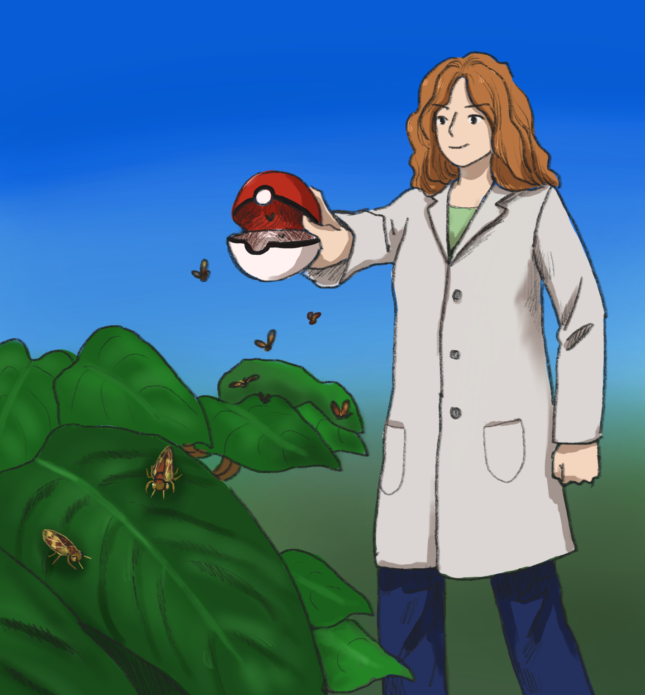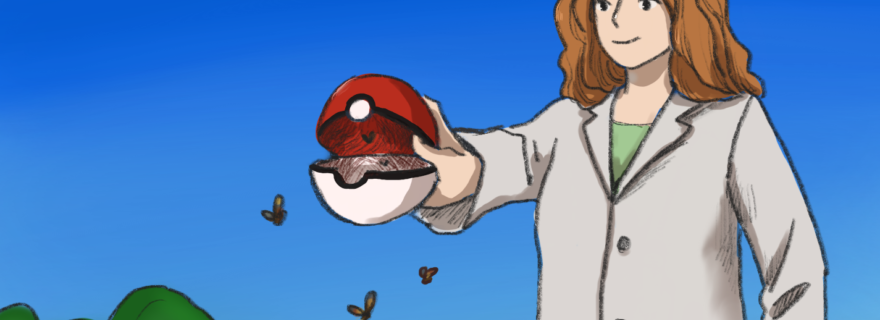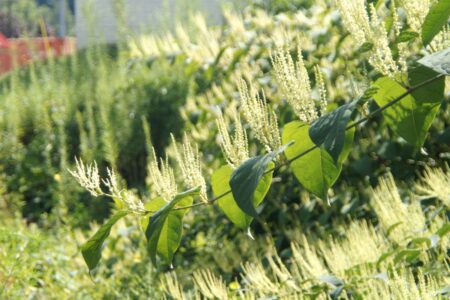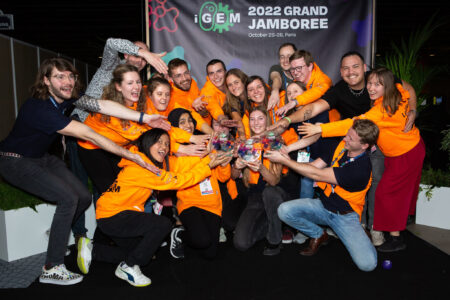Leaf flea, I choose you!
During the Popular Science Writing course, students are asked to write an article based on a scientific talk. This week an article by Stan Meijers, on the Japanese leaf flea as a potential repressant against Japanese knotweed.
Japanese knotweed is one of the most notorious invasive plant species in the Netherlands. And for good reason: this plant is extremely difficult to control. It can grow from pieces of rhizome smaller than one centimeter into a plant several meters tall. And once well established, the plant is relatively insensitive to many pesticides. It also causes a lot of damage to its environment. 'These plants crowd out native vegetation and pose a problem for foundations and waterways,' said Suzanne Lommen, project leader of Japanese leaf flea of the #uitde1000knoop project.
The root of the problem
The fact that Japanese knotweed flourishes in Europe is probably due to its lack of natural enemies. In Japan, there are bugs that live off Japanese knotweed and damage the plant. These saboteurs are lacking in Europe, allowing the plant to multiply freely. Researchers at Leiden University are now looking into the possibility of introducing a natural enemy of knotweed in the Netherlands; this could naturally reduce the proliferative plant.
However, it must be ensured that this natural enemy does not attack other Dutch plants. If all goes well, according to Lommen, you can achieve long-term suppression in this way by establishing a new ecological balance. In other words: the population size of the natural enemy and the weedy plant influence each other in a way that keeps both numbers low.
The weevils of Lake Victoria
It would not be the first time, by the way, that such a biological pest controller has been used to reduce stubborn plants. At the end of last century, Lake Victoria in Africa became largely overgrown with water hyacinth, an aquatic plant from South America, within a short period of time. Weevils were introduced into the lake, feeding only on the water hyacinth. In a short time, the beetles pushed the plant back considerably. The hippopotamus grass, which occurs naturally in the lake, also unexpectedly displaced the water hyacinth. As of now, the water hyacinth covers considerably less of the lake than before. It will never go away completely, but at least the plant has become manageable.
The secret weapon
Researchers at Leiden University now hope to tackle Japanese knotweed in a similar way in the Netherlands. The secret weapon? The Japanese leaf flea, a tiny insect that sucks the sap from the plant's leaf axils. This little weed vampire weakens the plant and can even kill it. The leaf flea is a natural enemy of knotweed and occurs naturally only in Japan. What makes this leaf flea so suitable is that it actually only lives on the three most common and problematic species of knotweed. Thus, it is unlikely to affect other plants.

Put to the test
What follows is field research. The leaf fleas have been released at three sites in the Netherlands. First of all, it must be shown whether the leaf fleas are capable of surviving in the Netherlands. This is the case at all locations. The next question is whether the leaf fleas can also settle and spread. Unfortunately, this still proves to be a challenge. In fact, there is little population growth in the habitat. That may be partly because the leaf fleas are dispersing. 'In addition, we do suspect that mortality plays a role,' Lommen explains.
Follow-up research shows that there is only occasional population growth. Its cause is not yet entirely clear, but according to Lommen, it does give hope that they have the potential to multiply well. In addition, the researchers looked to see if any damage could already be seen on the centipedes. Lommen was positively surprised: 'We already saw quite a bit of damage.'
Unfortunately, we can't turn back time; we will have to learn to live with Japanese knotweed. Fortunately, the preliminary results are hopeful. It remains to be seen whether the leaf flea will actually be the solution to our knotweed problem.
Sources:
Lommen, S. (2022, 14 januari). Biologische plaagbeheersing [Paperpresentatie]. Symposium Populair Wetenschappelijk Schrijven, digitaal.
Universiteit Leiden. (2021, 2 december). Media enthousiast zover mogelijke beheersing duizendknoop met bladvlo. Geraadpleegd op 24 januari 2022.
Peeters, N. (2020, 13 november). De demonisering van de duizendknoop: hoe een troetelplant uitgroeide tot paria. Leids Universitair Weekblad Mare. Geraadpleegd op 25 januari 2022.
Kennisnetwerk Invasieve Exoten. (z.d.). Biologische bestrijding bladvlo. Geraadpleegd op 25 januari 2022.
Kennisnetwerk Invasieve Exoten. (z.d.). Japanse duizendknoop. Geraadpleegd op 25 januari 2022.
Nieuwenhuis, E. (2000, 1 juni). Torretjes voorkomen natuurramp in Victoriameer. Evert Nieuwenhuis. Geraadpleegd op 26 januari 2022.





0 Comments
Add a comment